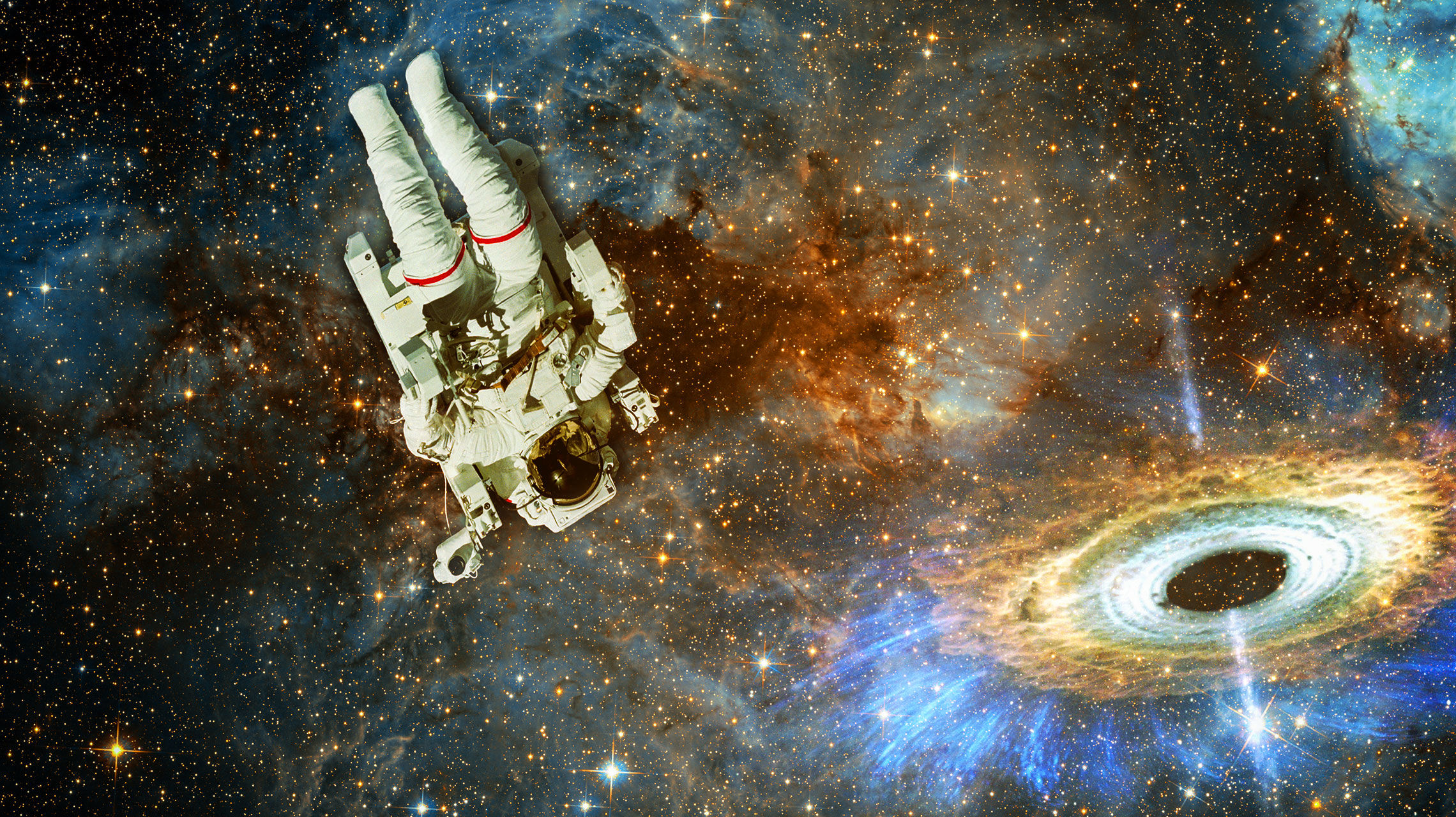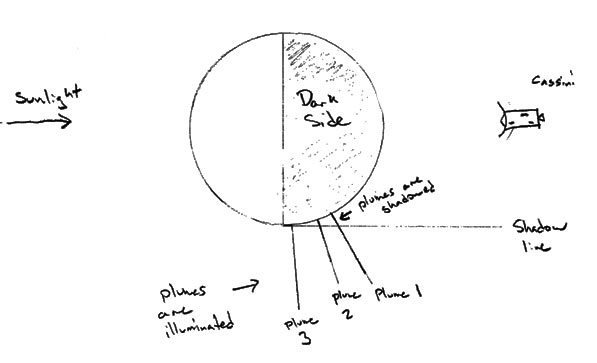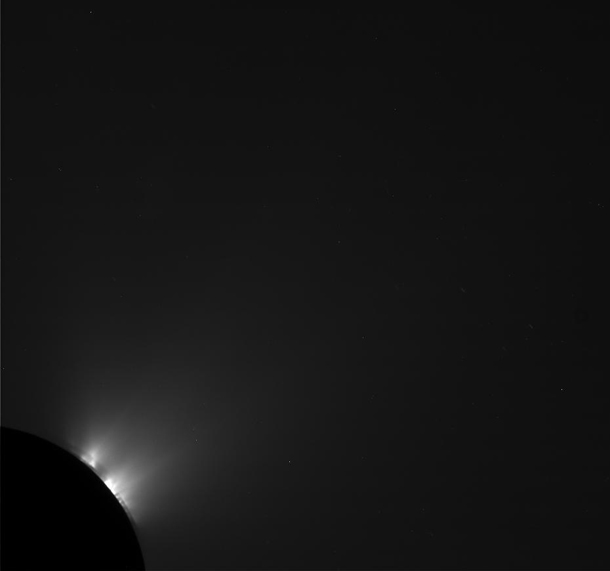Create a free profile to get unlimited access to exclusive videos, sweepstakes, and more!
A shadow falls on the ice geysers of Enceladus

So on Twitter, my pal Carolyn Porco -- imaging team leader for the phenomenal Cassini Saturn spacecraft -- announced that a bunch of raw (that is, unprocessed) images were just released from Cassini. Taken on April 14, these new shots show the moons Tethys and Enceladus. I've written about Enceladus about thirty two bajillion times, because it's fascinating, and photogenic as heck. Geysers of water are erupting from its south pole, reaching heights of hundreds of kilometers, with some particles leaving the tiny moon altogether.
And, unsurprisingly, the new pictures do not disappoint, especially this one of Enceladus!
I know. [Click to encronosenate.]
It almost looks like a solar eclipse picture, but the dark circle is actually the night side of Enceladus, with the sunlight coming from the lower left. You can see quite a few geyser plumes, blasting up from the surface to such heights that they're illuminated by the Sun and we can see them around the edge of the moon.
 As I looked at this shot, I suddenly realized something neat: you can see (at least) three dark arcs across the geysers -- I've used arrows to point them out in the inset picture. These arcs are actually shadows being cast by the moon itself! The curved edge of the moon's horizon casts a shadow into space, and where it falls across the geyser plumes it reveals itself as a dark, curved line.
As I looked at this shot, I suddenly realized something neat: you can see (at least) three dark arcs across the geysers -- I've used arrows to point them out in the inset picture. These arcs are actually shadows being cast by the moon itself! The curved edge of the moon's horizon casts a shadow into space, and where it falls across the geyser plumes it reveals itself as a dark, curved line.
What's so very cool is that you can see the arc of the shadow edge on the upper left -- what I'll call the first arc -- is actually higher off the limb of the moon than the one lower on the right (the third one is closer to the limb of the moon under the first arc).
Why is this cool? Because it tells us where those shadows are falling on the geysers. In other words, it's 3D info on the geysers for free!
Think of it this way: imagine two mountains, both the same size but one farther east than the other, at sunset. When the sun sets for the eastern mountain, the western one can still have its very top illuminated (this is essentially the same as the Sun setting later for folks living farther west). Just by taking a snapshot of the two mountains (and knowing they're the same size) you can tell which one is farther east and which is west just from that!
The same for the geysers. If you know things like the moon's size (we do!), the angle to the Sun (we do!), the position of the spacecraft (we do!), and what direction the spacecraft is pointed (we do!) then measuring where the shadow falls on the geyser plume gives you information about the geyser's location. In reality it's tougher than this, but in essence it's doable. In fact, Carolyn told me this has been done in Enceladus images before!

I drew several pictures of the geometry of all this for myself, and found it to be a fun exercise (though Zach Weiner's job is safe*). I know my handwriting is terrible, but the drawing above might help. As far as I can figure, if the shadow edge falls on the lower part of the plume, that means the Sun is up higher in the sky as seen from that plume. Where the shadow edge is higher up the Sun is lower in the sky. Since the Sun is on the other side of the moon as seen in this shot, that means plumes where the shadow edge is higher up (like the first arc) are closer to Cassini, and plumes where the shadow edge is lower (like the second arc) are farther around the curving surface of the moon. Armed with the numbers mentioned above I imagine quite a bit more could be plumbed from just this one shot, too.
To me, that's amazing. Mind you, Cassini was 165,000 kilometers (about 100,000 miles) from Enceladus when it took this shot... and well over a billion kilometers from Earth! And yet with a single image we can measure the heights of plumes of water being forced out from beneath the surface of this moon as it's squeezed by the mighty gravity of Saturn.
Maybe I've been watching too much Doctor Who lately, but all I can think of is: Oh, how wonderful humans can be! Our curiosity is limitless, and we can reach out with our minds and grasp things that are so very distant. And why? Because we want to.
Credit: NASA/JPL-Caltech/SSI
* Note: that link goes to Saturday Morning Breakfast Cereal, which, depending on when you click it, may have NSFW content, though in general the NSFWier it is, the funnier it is. Be ye fairly warned, says I.
Related Posts:
- Desktop Project Part 10: The crescent and the plume
- The staring eye of a crescent moon
- Enceladus sprays anew!
- Enceladus on full afterburner (probably my all time favorite Enceladus picture)



























